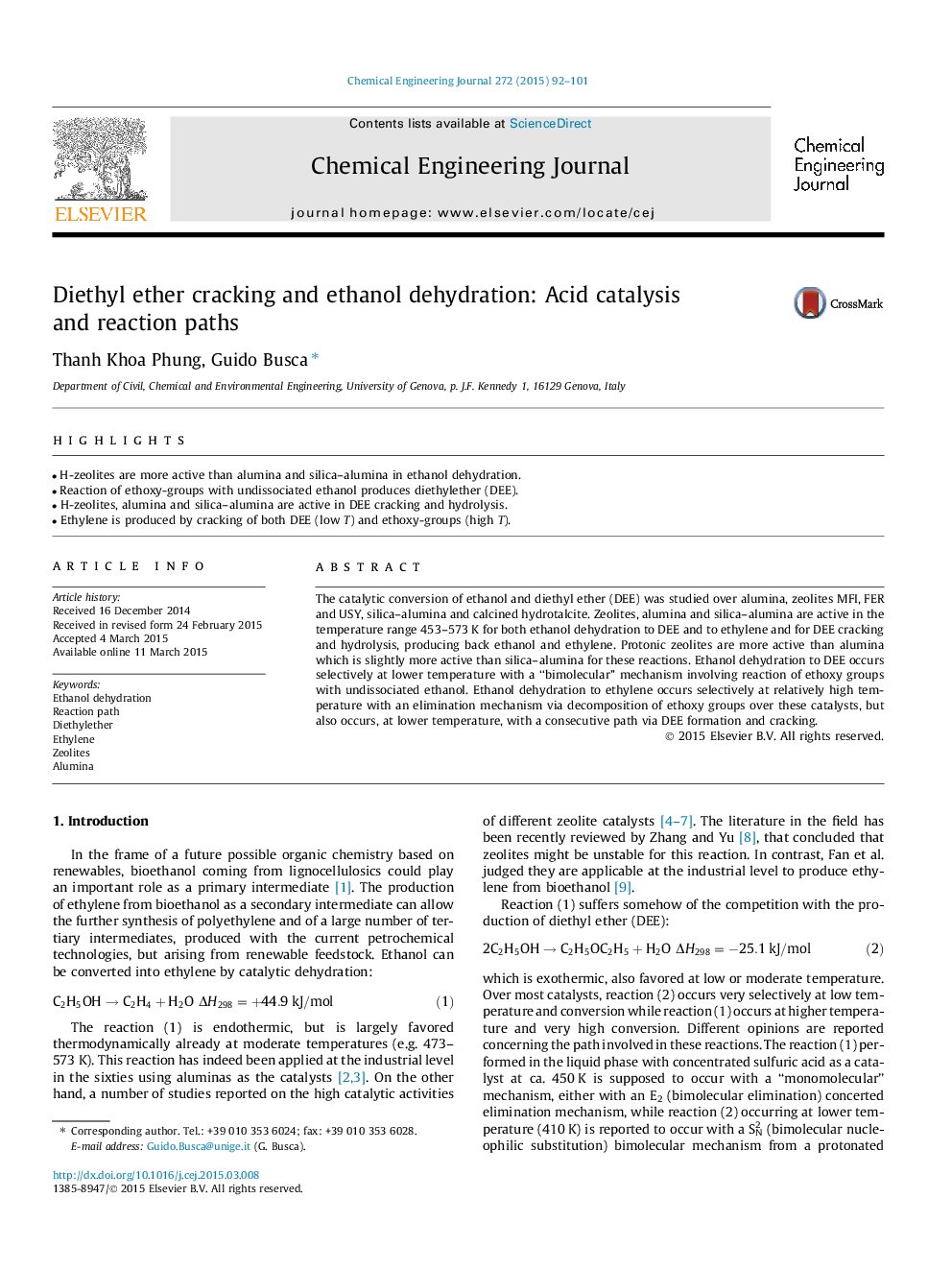| Article ID | Journal | Published Year | Pages | File Type |
|---|---|---|---|---|
| 146424 | Chemical Engineering Journal | 2015 | 10 Pages |
•H-zeolites are more active than alumina and silica–alumina in ethanol dehydration.•Reaction of ethoxy-groups with undissociated ethanol produces diethylether (DEE).•H-zeolites, alumina and silica–alumina are active in DEE cracking and hydrolysis.•Ethylene is produced by cracking of both DEE (low T) and ethoxy-groups (high T).
The catalytic conversion of ethanol and diethyl ether (DEE) was studied over alumina, zeolites MFI, FER and USY, silica–alumina and calcined hydrotalcite. Zeolites, alumina and silica–alumina are active in the temperature range 453–573 K for both ethanol dehydration to DEE and to ethylene and for DEE cracking and hydrolysis, producing back ethanol and ethylene. Protonic zeolites are more active than alumina which is slightly more active than silica–alumina for these reactions. Ethanol dehydration to DEE occurs selectively at lower temperature with a “bimolecular” mechanism involving reaction of ethoxy groups with undissociated ethanol. Ethanol dehydration to ethylene occurs selectively at relatively high temperature with an elimination mechanism via decomposition of ethoxy groups over these catalysts, but also occurs, at lower temperature, with a consecutive path via DEE formation and cracking.
